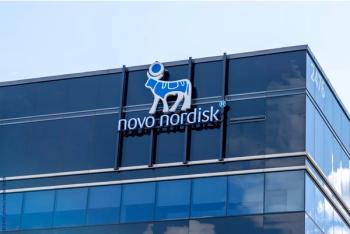
Optimizing Colorectal Cancer Screening and Follow-Up in Family Medicine
Barriers to increasing guideline-recommended CRC screening rates are slow to fall, but ongong focused counseling and advocacy in primary care will support the progress.
Colorectal cancer (CRC) remains the third most common cancer and the second leading cause of cancer-related mortality in the US. Despite the availability of effective screening modalities, substantial gaps persist in screening rates and appropriate surveillance practices.
Family physicians play a critical role in optimizing CRC detection and prevention through evidence-based screening, risk-stratified surveillance, and judicious use of chemoprevention strategies. Colorectal cancer screening and related topics were on the agenda during day 1 of the 2025 Family Medicine Experience (FMX) in Anaheim.
Current Screening Guidelines and Recommendations
Recent updates to CRC screening guidelines reflect a growing emphasis on earlier detection. The US Preventive Services Task Force (USPSTF), American Cancer Society (ACS), and National Comprehensive Cancer Network (NCCN) now recommend initiating screening at age 45 for average-risk adults, a reduction from the previous threshold of age 50.¹ This change acknowledges the rising incidence of CRC in younger populations. Screening should continue through age 75, with individualized decisions based on shared decision making for those aged 76-85 based on life expectancy, prior screening history, and patient preferences.¹
Options for Screening. Multiple screening modalities are available, each with distinct advantages and limitations. High-sensitivity stool-based tests, including fecal immunochemical testing (FIT) performed annually and multitarget stool DNA tests (such as Cologuard) performed every 3 years, offer noninvasive options that may improve adherence in certain populations.² Blood-based biomarker tests have recently received FDA approval, expanding the range of screening options. Structural examinations include colonoscopy every 10 years, CT colonography every 5 years, and flexible sigmoidoscopy every 5-10 years. The optimal screening strategy is the one that patients will complete, emphasizing the importance of shared decision-making and removal of access barriers.
CRC is unique among the conditions on the primary care clinicians’ screening radar, observed Mark Fendrick, MD, in a recent interview with Patient Care. He stressed that only the detection of polyps by colonoscopy allows removal of premalignant tissue - that's not the case with breast or lung cancer where assessments typically detect early malignancy. Of course, optimal CRC screening is complete screening where an abnormal finding on a noninvasive test is followed by colonoscopy for confirmation.
Surveillance After Polypectomy and Adenoma Detection
Post-polypectomy surveillance represents a critical component of CRC prevention, yet as with baseline screening recommendations, adherence to evidence-based intervals remains suboptimal. The US Multi-Society Task Force on Colorectal Cancer provides risk-stratified recommendations based on adenoma characteristics.³ Individuals with a normal baseline colonoscopy can safely extend their next screening to 10 years. Those with 1-2 small tubular adenomas (less than 10 mm) with low-grade dysplasia are categorized as low-risk and should undergo surveillance colonoscopy in 7-10 years. More recent evidence, however, supports safety of intervals up to 10 years in this cohort.³
Higher-risk findings necessitate more intensive surveillance. Patients with 3-4 tubular adenomas, any adenoma 10 mm or larger, or any adenoma with high-grade dysplasia require repeat colonoscopy in 3 years.³ Those with 5-10 adenomas warrant surveillance at 3 years, with consideration of genetic evaluation. Piecemeal resection of lesions greater than 20 mm mandates reassessment at 6 months to ensure complete removal. Adherence to these guidelines prevents both over- and under-surveillance, optimizing resource utilization while maintaining patient safety.
Barriers to Effective Screening Programs
Multiple barriers impede optimal CRC screening rates. Patient-level factors include lack of awareness, fear of colonoscopy, inadequate bowel preparation concerns, and logistical challenges such as transportation and time constraints.⁴ Barriers inherent to the US health care system include limited colonoscopy capacity, gaps in insurance coverage, and inadequate tracking systems for screening follow-up. Stool-based tests, while improving access, have lower sensitivity for advanced adenomas compared to colonoscopy and require consistent annual completion for FIT.
The multiple layers of impediment need to be matched by interventions on each level. Patient navigation programs, which provide education and logistical support, have demonstrated significant improvements in completion rates for screening.⁴ Tracking systems incorporated into electronic health records also support enhanced surveillance adherence. Structural barriers are being pressed by expanding access to alternative screening modalities that accommodate patient preferences, may address reluctance, and can be completed in the privacy of the home. Proactive discussions of all the available options, addressing patient questions and misconception, and a commitment to implementing system-level solutions are elements of the family physician’s routine daily practice that will help narrow CRC screening gaps.
Chemoprevention: Evidence and Limitations
Aspirin and other non-steroidal anti-inflammatory drugs (NSAIDs) are associated with chemopreventive effects against CRC in both primary and secondary prevention settings. For primary prevention, regular aspirin use has been associated with a 20-30% reduction in CRC incidence, with benefits most evident after 5-10 years of continuous use.⁵ Researchers propose that the mechanism likely involves inhibition of cyclooxygenase-2 (COX-2) pathways and prostaglandin synthesis.
Data from 2024-2025 may be transforming the secondary prevention landscape through precision medicine approaches. The ALASCCA trial, published in NEJM in 2025, demonstrated that 160 mg aspirin daily significantly reduces CRC recurrence in individuals with PIK3CA hotspot mutations and other PI3K pathway alterations.⁹ This represents a major advance in biomarker-driven chemoprevention, identifying which post-treatment patients derive the greatest benefit from aspirin therapy based on tumor molecular characteristics.⁶
These promising findings notwithstanding, current USPSTF guidelines recommend individualized decision-making regarding aspirin for primary prevention of CRC. The 2022 USPSTF statement notes insufficient evidence to recommend aspirin initiation for CRC prevention alone, particularly in adults over age 60, because of the increased bleeding risks that that may outweigh benefits.⁷ For adults aged 40-59 with elevated cardiovascular (CV) risk, aspirin may provide dual benefits for CV disease and CRC prevention, though the net benefit varies by individual risk profile.
Non-aspirin NSAIDs, including selective COX-2 inhibitors, have shown superior efficacy in preventing metachronous adenomas but carry substantial CV and gastrointestinal toxicity, making routine use inadvisable.⁸ For primary prevention, the current evidence does not support widespread chemoprevention outside of high-risk populations, for example, people with familial adenomatous polyposis or Lynch syndrome. However, the emerging data on PIK3CA-mutated tumors suggest that molecular profiling of resected CRC may soon guide evidence-based aspirin use for secondary prevention in appropriately selected patients.
Final Thoughts
Optimizing CRC screening and management requires family physicians to remain current with evolving guidelines, implement risk-stratified surveillance protocols, address access barriers, and judiciously consider chemoprevention in appropriate patients. By leveraging the full spectrum of screening modalities and tailoring approaches to individual patient circumstances, primary care providers can significantly reduce CRC morbidity and mortality in their patient populations.
Family physicians occupy a central position in advancing colorectal cancer (CRC) prevention and management. Staying abreast of evolving guidelines, following risk-stratified surveillance protocols, addressing barriers to access, and using chemoprevention cautiously all contribute to comprehensive care. By integrating the full range of screening modalities and tailoring strategies to individual needs, primary care clinicians can drive meaningful reductions in CRC morbidity and mortality across their communities.
References
Davidson KW, Barry MJ, Mangione CM, et al. Screening for colorectal cancer: US Preventive Services Task Force recommendation statement. JAMA. 2021;325(19):1965-1977. doi:10.1001/jama.2021.6238
Wolf AMD, Fontham ETH, Church TR, et al. Colorectal cancer screening for average-risk adults: 2018 guideline update from the American Cancer Society. CA Cancer J Clin. 2018;68(4):250-281. doi:10.3322/caac.21457
Gupta S, Lieberman D, Anderson JC, et al. Recommendations for follow-up after colonoscopy and polypectomy: a consensus update by the US Multi-Society Task Force on Colorectal Cancer. Gastroenterology. 2020;158(4):1131-1153. Doi: 10.1053/j.gastro.2019.10.026
Dougherty MK, Brenner AT, Crockett SD, et al. Evaluation of interventions intended to increase colorectal cancer screening rates in the United States: a systematic review and meta-analysis. JAMA Intern Med. 2018;178(12):1645-1658. doi:10.1001/jamainternmed.2018.4637
Rothwell PM, Wilson M, Elwin CE, et al. Long-term effect of aspirin on colorectal cancer incidence and mortality: 20-year follow-up of five randomised trials. Lancet. 2010;376(9754):1741-1750. doi:10.1016/S0140-6736(10)61543-7
Drew DA, Cao Y, Chan AT. Aspirin and colorectal cancer: the promise of precision chemoprevention. Nat Rev Cancer. 2016;16(3):173-186. doi: 10.1038/nrc.2016.4
Davidson KW, Barry MJ, Mangione CM, et al. Aspirin use to prevent cardiovascular disease: US Preventive Services Task Force recommendation statement. JAMA. 2022;327(16):1577-1584. doi:10.1001/jama.2022.4983
Arber N, Eagle CJ, Spicak J, et al. Celecoxib for the prevention of colorectal adenomatous polyps. N Engl J Med. 2006;355(9):885-895. doi:10.1056/NEJMoa061355
Martling A, Myrberg IH, Nilbert M, et al. Low-dose aspirin for PI3K-altered localized colorectal cancer. N Engl J Med. 2025;393:1051-1064 doi:10.1056/NEJMoa2504650
Newsletter
Enhance your clinical practice with the Patient Care newsletter, offering the latest evidence-based guidelines, diagnostic insights, and treatment strategies for primary care physicians.































































































































































































































































































